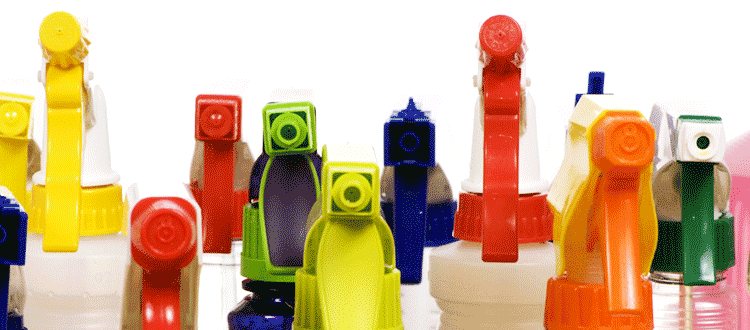Understanding the New Ingredient Disclosure Victories in California and New York
 |
| Jamie McConnell Director of Programs & Policy |
In the last 12 months we have seen huge wins for our right to know! Last fall, California passed SB 258, the first law in the nation to require disclosure of ingredients in cleaning products directly on the product label. And this past month New York State also began to require online disclosure of ingredients in household and institutional cleaning products. Knowing what ingredients are in the products we use at home or at work is vital to making informed decision about our health. And Californians and New Yorkers won’t be the only ones to benefit — as powerful market forces, what’s required in these states will move companies toward similar disclosure practices throughout the nation.
CA SB 258 and the NY Guidance complement each other well and are important wins for public health, but do have some key differences. But first, a little background information…
Worth the Wait
In New York, it all started in the 1970s when a law was actually passed requiring disclosure of ingredients in institutional and household cleaning products as “prescribed by the commissioner of the Department of Environmental Conservation”. The problem is the commissioner of the DEC never provided companies with any guidance on how and what to disclose so for the next 30 plus years cleaning product companies were not complying with the law.
In 2009, organizations led by Clean and Healthy New York (Women’s Voices for the Earth, Sierra Club, American Lung Association in NY, Riverkeeper, Environmental Advocates of NY, and the Public Interest Research Group, with support from Earthjustice) sued the companies for not disclosing ingredients to the state. The lawsuit was dismissed but as a result the NY DEC began work on providing guidance to companies on what to disclose.
It took a long time (almost 9 years) that included an in-person stakeholder meeting with companies, but on June 6, 2018 the guidance was finalized and New York has become one of the leaders in ingredients disclosure.
A Complementary Pair of Right to Know Victories
CA SB 258 and the NY Guidance provide us with critical ingredient information we can use to decide what products to bring into our homes and workplaces. Here are some key differences between the two requirements (for a more in-depth comparison click here):
Scope
California requires disclosure of ingredients in household and institutional cleaning products and disinfectants (online only). New York requires disclosure of household and institutional products but disinfectants are exempt.
Method of Disclosure
California requires disclosure of the presence of allergens and chemicals of concern directly on the product label, other ingredients like fragrance ingredients, intentionally-added ingredients, contaminants, and CAS #s must be disclosed online on a manufacturer’s website.
New York does not require ingredient listings on the product label, but requires online disclosure of ingredients. In addition to CAS #s, contaminants, fragrance and intentionally-added ingredients, New York also requires the disclosure of nano-ingredients and health and safety data.
Contaminants
California requires online disclosure of 34 contaminants at or above 100ppm. New York requires disclosure of more contaminants and at lower reporting levels.
Identifying Chemicals of Concern
The lists CA and NY pull from to identify chemicals of concern are virtually the same, but NY includes the AOEC Asthmagen list.
Confidential Business Information (CBI)
California allows manufacturers to claim CBI for ingredients but cannot claim CBI for allergens or chemicals of concern. New York also allows manufacturers to claim CBI for ingredients even if the ingredients are an allergen or a chemical of concern. However, if claiming CBI a manufacturer has to indicate there is a COC present and also use the functional name of the ingredient being withheld as CBI.
There are other differences between the requirements that you can view here. But the bottom line is requirements in CA and NY will help give users of these products more information than ever before and are a victory for our right to know!




These have been a long time coming. I encourage my friends to look at the ingredients on every single personal care item they purchase to see what’s in them and then to research at least one or two of them – most folks don’t have the time to do the whole ball of wax first time out, but everyone i think can take a few minutes to research one or two ingredients. After a while you’ll have a list of ingredients you don’t want in your products. If everyone who did this would share that list with their friends I believe it would make a big impact. It would be nice to think that this type of legislation would be nationwide, but I don’t see that coming anytime soon.